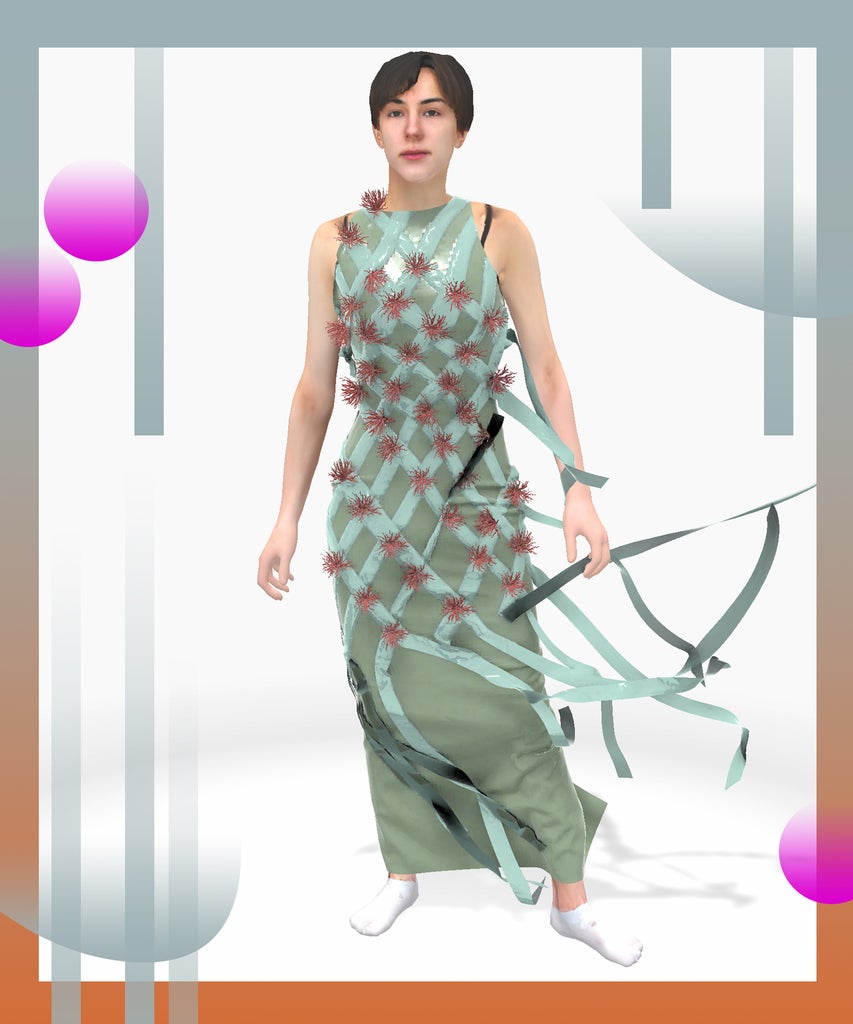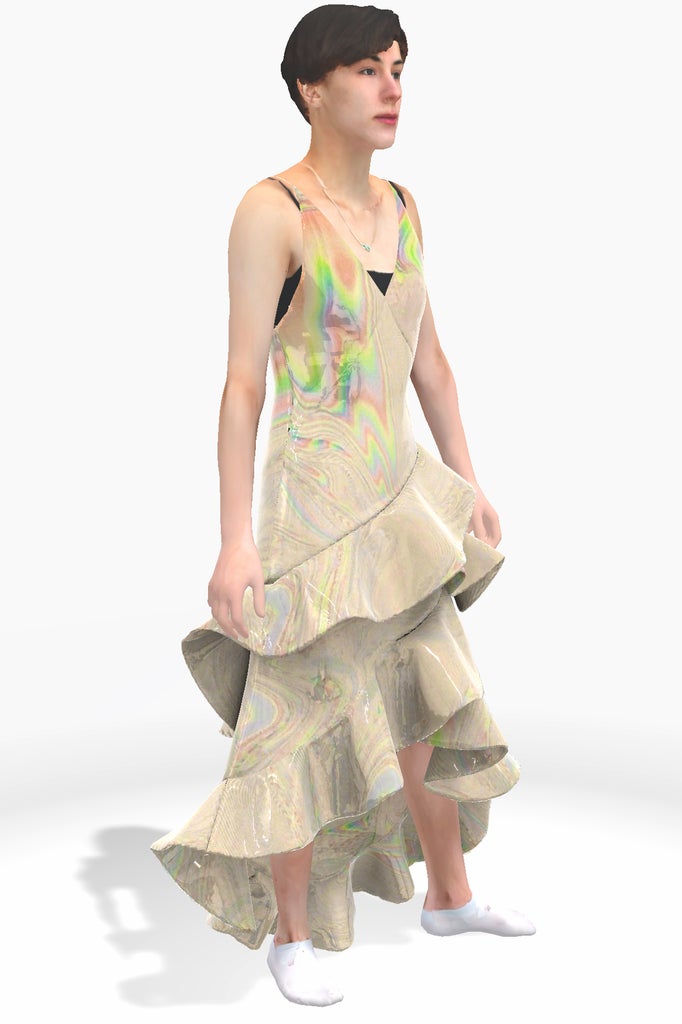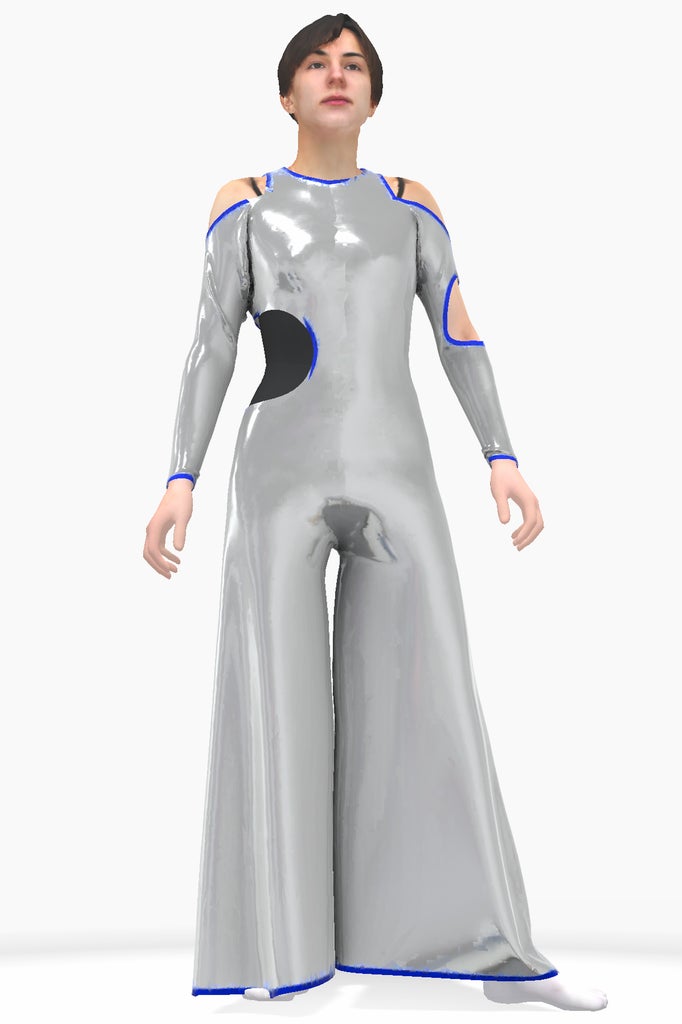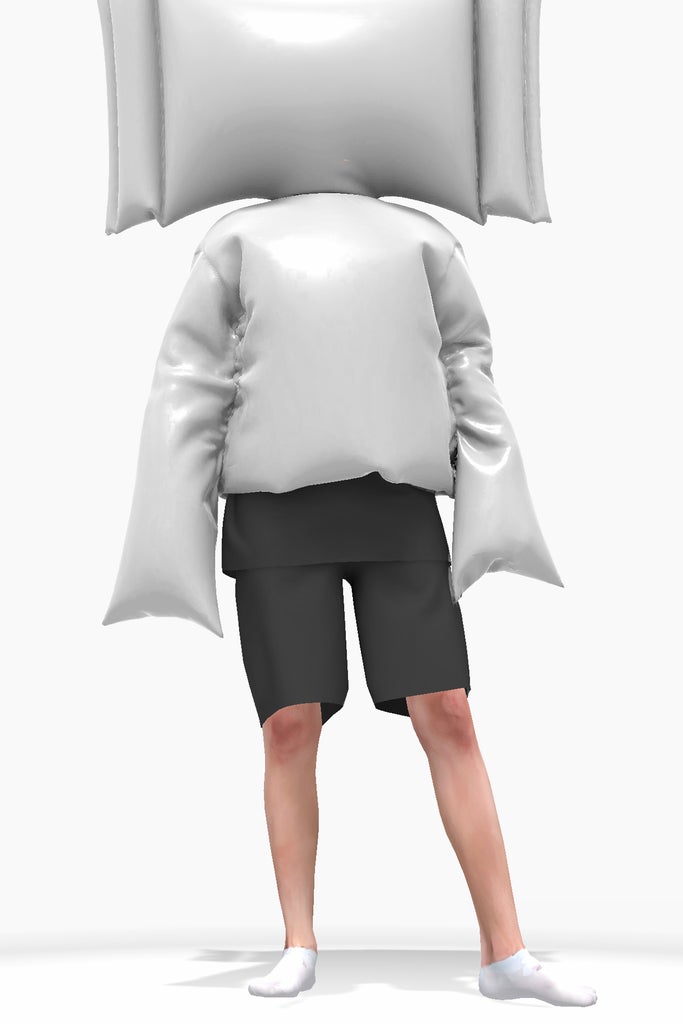
Personally, I love online shopping — the thrill of a vast selection that you can peruse while wearing your pajamas never gets old, and the excitement of an at-home delivery feels like Christmas morning every single time. But even when size charts and quizzes are available, shopping online still holds uncertainty when it comes to fit, forcing me to undertake a terrible odyssey to return packages at the post office. Undoubtedly, what you’re able to learn in a physical dressing rooms is the biggest benefit to IRL shopping these days.
Thankfully, developers are hard at work replicating that for online shopping.
The world of digital dressing rooms is rapidly growing, not only because of the convenience of a try-on experience at home, but because it has the potential to solve issues regarding waste and sustainability when it comes to deliveries and returns.

So I wanted to see how feasible a digital dressing room could be. I got in touch with TRAI, a virtual fitting room in which brands and retailers can upload and display garments that customers try on via avatars based on their exact body dimensions. TRAI’s developer, the Moscow-based company in3D, recently partnered with Replicant, a digital-only fashion developer, to implement this technology for retailers like PUMA. Currently though, the clothes available to try on do not correlate to IRL clothing. The money you spend with TRAI are the equivalent of digital tokens that you can only enjoy only online. Knowing this, I was a bit hesitant to about this dressing room before even entering it. After all, how much could these clothes mean to me if I could never physically wear them?
I first downloaded the in3D app — available on iOS and Android — and then proceeded to create my digital avatar, for which I was required to change into form-fitting clothing (I chose a pair of bike shorts and a tight-fitting T-shirt). Next, the app guided me through its scanning process, which required me to stand like a real-life mannequin, walking front to back and in circles for its scanner to get a good look at my physique. Admittedly, I felt a little scared at this point by the full-range scan that was more sci-fi than I was expecting. After a couple of minutes, my avatar, which ended up looking like a paper-doll version of me, was ready to try stuff on.

Once inside the digital dressing room, I realized that my first impulse was to sample looks that I’d never choose to try on IRL. I put on a green crop top with giant ruffles that resembled freshly-picked lettuce. I also tried metallic silver jeans, a Y2K jumpsuit, and a surreal pillow “top” (with an actual pillow helmet) that made my avatar look like it had been vacuum sealed. I did like a few dresses — a flowy frock with flower embellishments was especially nice — but didn’t feel compelled to dispose of my coins on these trends online or IRL.
If my favorite online retailers had a photorealistic digital dressing room, I’d be able to try their garments before even buying them — a revolutionary idea for 2021, but brought to you by IRL stores. But with TRAI and Replicant, the clothes are never made. Instead, they are meant to be purchased and worn in digital photos. Essentially, if I shopped with them, I’d be buying digital clothes for a digital version of me, which — at least now — isn’t really something that seems worth spending money on.

But when it comes to digital fitting rooms, the benefits are clear. For an industry plagued with overconsumption and mass production, digitizing this experience can allow retailers minimize the amount of returns they need to account for. This model is already being used by the beauty industry, with brands like MAC and stores like Sephora providing customers with online alternatives to try on everything from lipsticks to foundation colors before they place their orders.
“Digital clothing allows consumers to live out their fast fashion fantasies within an environment that is much more sustainable given the traditional industry’s existence of overproduction and overconsumption,” said Replicant founder Regina Turbina in a press release. The industry contributes 8-10% of total greenhouse gas emissions, and produces more products than it needs to. According to the EPA, 17 million tons of textiles were produced in 2018, with 11 million going to landfills. Replicant hopes to have a hand in decreasing these figures.
While I thoroughly enjoyed seeing myself as a Pillow Person, I’m still an old-fashioned gal who’s not quite ready to build an all-digital wardrobe. But, if technology is developed in favor of those of us ready to try on clothes online to enjoy them IRL, then maybe I might step out on the streets wearing a pillow on my head for the day. Until then, I’ll leave it in the metaverse.
Like what you see? How about some more R29 goodness, right here?
Why Gamers Are The Cool Kids In Fashion Right Now
Powered by WPeMatico


